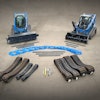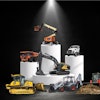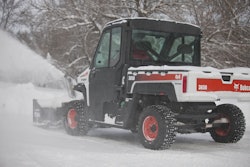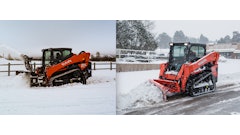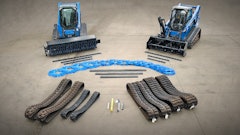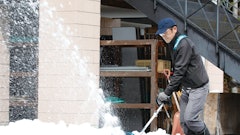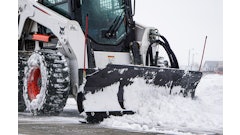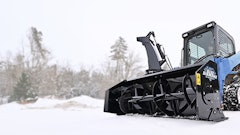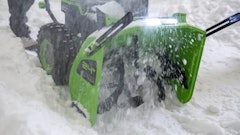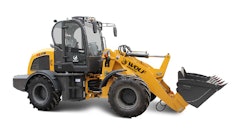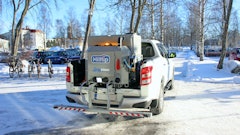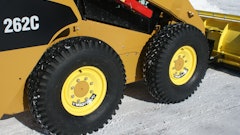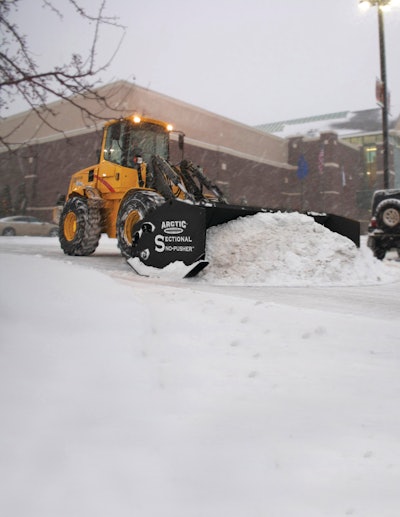
Safety when plowing snow begins well before the actual snowstorm and plowing efforts start.
It begins with knowing the property you’re going to plow. Because snow can obscure aspects of a parking lot – including speed bumps, curbs, island edges, parking stops, sidewalk edges, bushes, drains –it’s important that the person who will be plowing a parking lot walk the lot prior to the first snow. That enables him to anticipate safety issues and plan for them.
When walking a property make sure to mark any obstruction or aspect of the parking lot that might be difficult to see after a significant snowfall or that requires special attention while plowing (don’t bury a fire hydrant, for example). And if you can work from a diagram of the lot take notes to refer to later.
And snow plowing should rarely be a surprise. While storms can pop up quickly, plow operators should be monitoring the weather service to anticipate storms, both as far as timing and significance are concerned. While this can be seen as an operations issue, knowing when the snow will start and how extensive the storm will be enables operators to prepare for the work ahead.
Most parking lot plowing is done at night so proper rest is essential to a safe event, and knowing when a storm will hit and when a driver is likely to get on the road can enable the driver to get some additional sleep beforehand. Plus, it reminds drivers that they need to be completely aware and not under the influence, so drinking can be avoided if a storm is anticipated.
Preparing to Plow
When a driver is ready to leave home to plow it’s important he dress appropriately. While truck cabs are much more comfortable today, drivers often exit the cab so proper boots, gloves, hat and layered clothing are essential. This is especially important if, for some reason, a driver is stranded outside his truck or even in his truck for an extended period of time.
Once you’re ready to plow, it’s essential to check your tools: your vehicle and your plow. In many cases ballast improves handling and traction of a truck by balancing out the weight of the plow on the front end, so add and secure any ballast in the bed behind the back axle near the tailgate.
Tire pressure, engine belts and hoses, all fluid levels and fuel level should be checked each time before the truck leaves the yard, and make sure battery connections are tight and free of corrosion. Also check the truck’s heater, deicier and windshield wipers. You don’t want to be out there without heat, and driving down the road with a plow isn’t the time to discover your wipers or deicer aren’t working. A cell phone or two-way radio is essential as well... and wear a seat belt, no excuses.
From a safety standpoint the vehicle lights are the most-important element to let others know you are there, so check to make sure your headlights, brake lights, turn signals and strobe light are all working properly. Consider adding a strobe light and backup lights if you don’t have them as they improve driver visibility and make your vehicle easier for others to see.
And each truck should be outfitted with a safety kit that should include a fire extinguisher, jumper cables, flashlight, tool kit, tow strap, flares, first aid kit, fuses for your vehicle, an ice scraper, lock deicer, washer fluid, a shovel and a bag of sand or salt and anything else that might help in an emergency. Remember to replenish each kit after any storm.
As for the plow itself, it should be treated the same as any piece of equipment – start by reviewing the owner’s manual as plow manufacturers provide a variety of information they think it’s important for you to know. The plow manual should be in each truck for reference, too.
Then, before hitting the road check the plow-and-truck connections, plow hydraulics, bolts and welds. It’s also a good idea to carry a kit to aid emergency repairs for your plow. That kid could contains hydraulic fluid and hoses, extra cutting-edge bolts, a trip spring and anything else that an operator can replace in the field.
Safe Travels to the Jobsite
Now that you’re ready to plow you need to get to the jobsite.
The safest way to drive on roads to a parking lot is to raise the plow off the ground, making sure it doesn’t impede your vision or obscure the light from your headlights. Angle the blade to the right so it won’t “catch” a curb or snowbank as you’re driving. Turn off your plow control so you don’t accidentally operate it, and never plow snow while driving from one jobsite to another.
Even if speed limits permit faster travel, don’t drive faster than 40 mph because of weather conditions and the fact you are not used to driving with a blade on the front of your truck.
Safe Plowing on the Lot
When you start to plow, the truck should be moving before you drop the blade. Avoid spinning your tires by accelerating gradually, enabling the tires to get better traction on the pavement. Quick acceleration can spin the wheels fast and they can grab the pavement and jerk the truck forward unexpectedly. Plow no faster than 14 mph, but let circumstances including weather and pavement conditions dictate your speed.
Some areas of a parking lot or residential driveways require backdragging to get started. To backdrag safely, raise the blade, drive forward slowly to the garage or building edge, then lower the blade and back up, pulling snow with you.
When backing up make sure to turn in the seat and look behind you. Mirrors alone are not safe. Also, do not backdrag any more than necessary. Backdragging is a technique used only for a few truck lengths to clear an area in which you can turn your truck around and plow forwards. Driving forward is by far the safest (and most efficient) approach to plowing. So when you’re walking through the property prior to the first snowfall, plan your plowing for as much forward-driving as possible.
When plowing forward, slow down as you approach the end of each pass and push the snow where you want it. Don’t let the plow slam into already piled snow as it’s bad for the truck and unsafe for the driver. Once you’ve completed the pass, raise the blade before moving into position for the next pass. Then once in place, start the vehicle forward and then drop the blade to begin plowing.
Be aware of where you are stacking snow. Avoid stacking snow near entrances and exits where it might hamper visibility of other drivers, and don’t stack it near fire hydrants or drains and catch basins. Your initial planning should include identifying areas where snow can safely be stacked.


